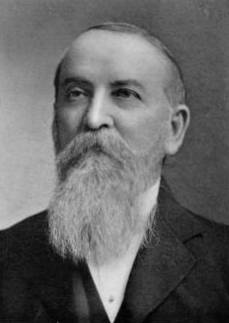5fish
Well-Known Member
- Joined
- Jul 28, 2019
- Messages
- 10,739
- Reaction score
- 4,570
Here is the tale...

snip...
The skirmishes at Lawrenceburg and Battle of Dog Walk, located in Anderson County, Kentucky, are like most Civil War battles, not very known and important to only those who fought them - and for those who made the ultimate sacrifice, their families. The battles are a part of our history and as such, they must not be forgotten.
snip...
The Confederate Cavalry did not dislodge the Federal position at the Cemetery South of Lawrenceburg and retired South down Stringtown Rd. The troopers proceeded West on what is now Hwy 513, which intersects Chesser's Store Road (US 62) in the small community of Fox Creek (Dog Walk). It was here that the Confederate Cavalry, now under the command of Col. Ashby was waiting for Gen. Sill's supply wagons. Thus begun the Battle of Dog Walk (aka the Battle of Chesser's Store, the Battle of Dry Ridge or the Battle of Salt River). By the end of the day, fifty eight of Gen. Sill's wagons were captured and burned and some 600 Federal prisoners were taken. The Battle of Dog Walk, October 9th, 1862, fought the day after Perryville, was a Confederate victory. However, like so many battles in the Civil War where men fought, and bled, and died, it was overshadowed by other events and proved decisive only for those who were lost.

Battle of Dog Walk
Dogwalk "was a great deal harder fight than Shilo [sic] was according to the number engaged ". Pvt. Alpheus.S. Bloomfield - 1st Ohio Light Artillery -letter to his father (1).
battlesoflawrenceburganddogwalk.weebly.com
snip...
The skirmishes at Lawrenceburg and Battle of Dog Walk, located in Anderson County, Kentucky, are like most Civil War battles, not very known and important to only those who fought them - and for those who made the ultimate sacrifice, their families. The battles are a part of our history and as such, they must not be forgotten.
snip...
The Confederate Cavalry did not dislodge the Federal position at the Cemetery South of Lawrenceburg and retired South down Stringtown Rd. The troopers proceeded West on what is now Hwy 513, which intersects Chesser's Store Road (US 62) in the small community of Fox Creek (Dog Walk). It was here that the Confederate Cavalry, now under the command of Col. Ashby was waiting for Gen. Sill's supply wagons. Thus begun the Battle of Dog Walk (aka the Battle of Chesser's Store, the Battle of Dry Ridge or the Battle of Salt River). By the end of the day, fifty eight of Gen. Sill's wagons were captured and burned and some 600 Federal prisoners were taken. The Battle of Dog Walk, October 9th, 1862, fought the day after Perryville, was a Confederate victory. However, like so many battles in the Civil War where men fought, and bled, and died, it was overshadowed by other events and proved decisive only for those who were lost.




